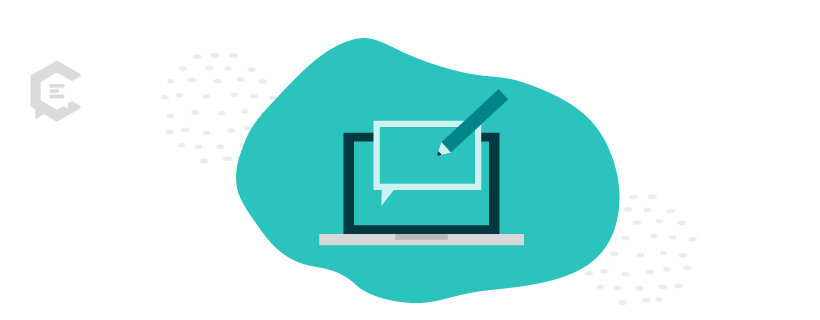Generating conversions is the holy grail of all blog goals.
Improved brand awareness is great. Generating organic traffic is awesome. But nothing beats conversions.
After all, page views can’t pay the bills. You generate revenue when your site visitors convert to leads. Then those leads become paying customers. However, if you’re getting truckloads of views, but none of your site visitors are converting, you’re in the right place.
In this guide, you’ll learn why your content doesn’t convert and what you can do about it. You’ll also come away with proven tips to ensure success.
Table of Contents
- Why don’t blogs convert?
- How to increase content conversion rates
- How to write an engaging blog post
- Blog engagement metrics to keep an eye on
- Customers Also Ask
- Skyrocket content conversions with ClearVoice
Why don’t blogs convert?
Here are some of the main reasons why the vast majority of blog posts don’t generate conversions:
- Little to no traffic. Website traffic and conversions go hand in hand. According to statistics, roughly 91% of all blog content gets zero organic traffic—effectively reducing their conversion potential.
- Misaligned keyword strategy. A blog that gets decent traffic may still fail to generate conversions if it contains the wrong keywords. It may be optimized for keywords that resonate with users who don’t have a purchase intent.
- Low-quality content. Poorly written content with grammatical errors, readability issues, and inaccurate or outdated information drains readers’ confidence in a website. This ruins your chances of converting them into subscribers or paying customers.
- Ineffective or non-existent Conversion-Rate Optimization (CRO). Blog content requires proven CRO strategies to turn reader engagement into conversions. It must have compelling Calls-to-Action (CTAs), conversion-oriented visuals, and proper formatting.
- Unclear goals. To generate conversions, blog posts must be created with a well-defined objective. Everything—from the headline to the conclusion—must be designed to hook the right audience, provide an enriching experience and contain the correct elements to drive user action.
Understanding the problems that cripple your conversions is just one step in a mile-long journey. Use what you learned to develop a new, conversion-focused content strategy that guarantees business results.
How to increase content conversion rates
If your content marketing efforts don’t result in conversions, reinforce your content strategy with the methods below:
1. Define SMART goals
To get sustainable conversions from blogging, set goals that are Specific, Measurable, Achievable, Relevant, and Time-bound—AKA “SMART” goals.
- Specific: What business objective do you want to achieve with blogging?
- Measurable: Which Key Performance Indicators (KPIs) will you track to measure progress?
- Achievable: Is a particular objective reasonable and attainable given your organization’s resources?
- Relevant: Will a specific content project impact marketing success?
- Time-bound: When do you anticipate seeing results?
SMART goals provide a clear direction and help you make informed decisions in your content strategy.
Suppose your goal is to increase downloads of your industry report. Set a specific value you can measure and ensure it’s achievable with your company’s current assets and within your projected timeline (e.g., Get 20,000 industry report downloads in three months).
2. Establish your baselines
Identify KPIs, analyze your current strategies and evaluate their effectiveness. Your baseline performance metrics will help determine if your new content strategies work.
For example, to get more industry report downloads, start by analyzing your landing page and other relevant blog posts (articles that mention the report). Use tools like Google Analytics to measure KPIs like session duration, pageviews, bounce rate, and scroll depth.
Keep your KPIs in mind as you measure the performance of future content.
3. Redefine your keyword strategy
Revisit your keyword strategy and prioritize target keywords with commercial or transactional intent.
People use commercial keywords when comparing product alternatives, looking for pricing information or conducting in-depth research before making a purchase. Transactional keywords, on the other hand, are used when individuals are ready to take action.
Top-of-the-line SEO tools like Semrush reveal the search intent behind keyword ideas—along with metrics like keyword difficulty, search volume, and Cost Per Click (CPC). Create new content or optimize existing blog posts around these keywords to attract purchase-intent traffic.
4. Build content clusters
Create content clusters by connecting related pieces of content to a “pillar page” via internal links. This makes it easier for site visitors to find information and reach the end of their buyer journey.
The main topic and its relevant subtopics are introduced and briefly discussed on the pillar page, with internal links leading readers to more detailed posts on subtopics or “cluster posts.” This method of grouping content pieces is more intuitive and straightforward, making it easier for your site visitors to find the content they’re looking for.
5. Improve the content creation process
To create high-performing content pieces, you must pay close attention to every step of your content development process—from topic ideation to proofreading.
Fine-tune your content development workflow to produce higher-quality content faster and more consistently. Obtain feedback from your content development team to uncover bottlenecks and inefficiencies.
How to write an engaging blog post that generates conversions
Consider using the tips below to write highly engaging blog posts.
- Research profitable content ideas by spying on competitors, running surveys, and scooping up popular questions in forums and Q&A websites.
- Add relevant and compelling visuals to make your blog posts more engaging.
- Write shorter and more precise sentences (20 words or less).
- Establish authority and confidence by writing with an active voice.
- Use proofreading tools like Grammarly to augment and speed up the editing process.
- Break down blog posts into clear sections with keyword-optimized subheadings.
- Consider investing in on-page optimization tools like Frase, Surfer, and Semrush Writing Assistant to maximize Search Engine Optimization (SEO) performance.
- Include internal links to relevant blog posts that add value to the reader experience.
- Mention statistics that back up your claims.
- Start with a short and to-the-point intro.
- End with an authoritative conclusion that recaps everything and empowers action.
Customers Also Ask
What are SMART goals for blogging?
SMART goals are specific, measurable, attainable, relevant, and time-bound. For example, your SMART goal could be to increase traffic to your product comparison post by 200% in six months.
What are the 5 major components of a blog?
Five major components of a blog post:
- Eye-catching, descriptive headline
- Punchy and captivating intro
- Scannable and keyword-optimized subheadings
- Well-written, informative, and fluff-free text
- Actionable CTAs (in the conclusion and instructional parts)
What are the benefits of blogging?
Blogging drives organic traffic to your website, establishes brand authority, and converts readers into customers with the right tactics. It also increases brand loyalty by regularly providing your audience with helpful content.
Skyrocket your content conversions with ClearVoice
Improving blog content conversion rates isn’t a walk in the park. But it can be accomplished with the right team.
Let our industry experts help with your content strategy formation, streamline content creation, and unlock your website’s maximum conversion potential.







